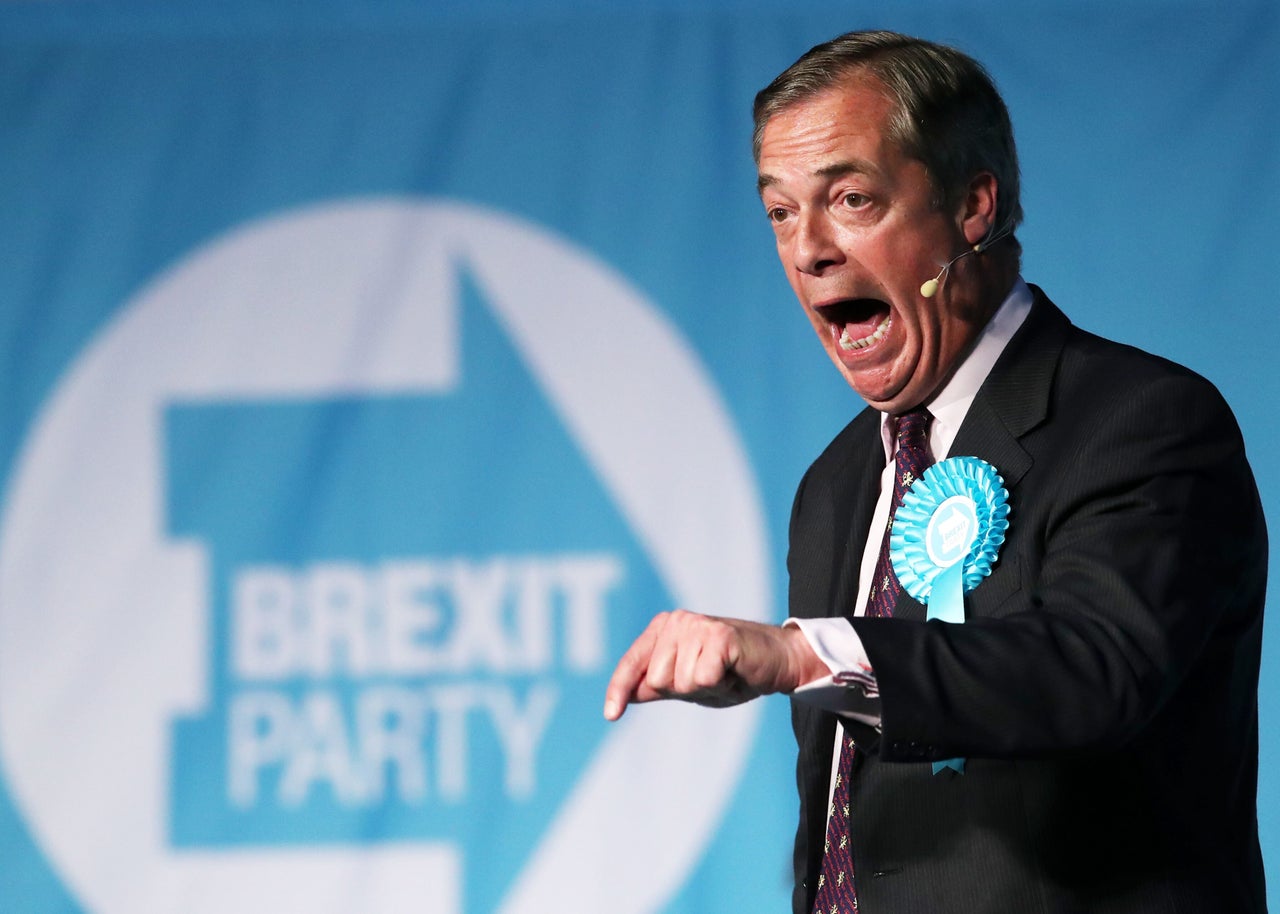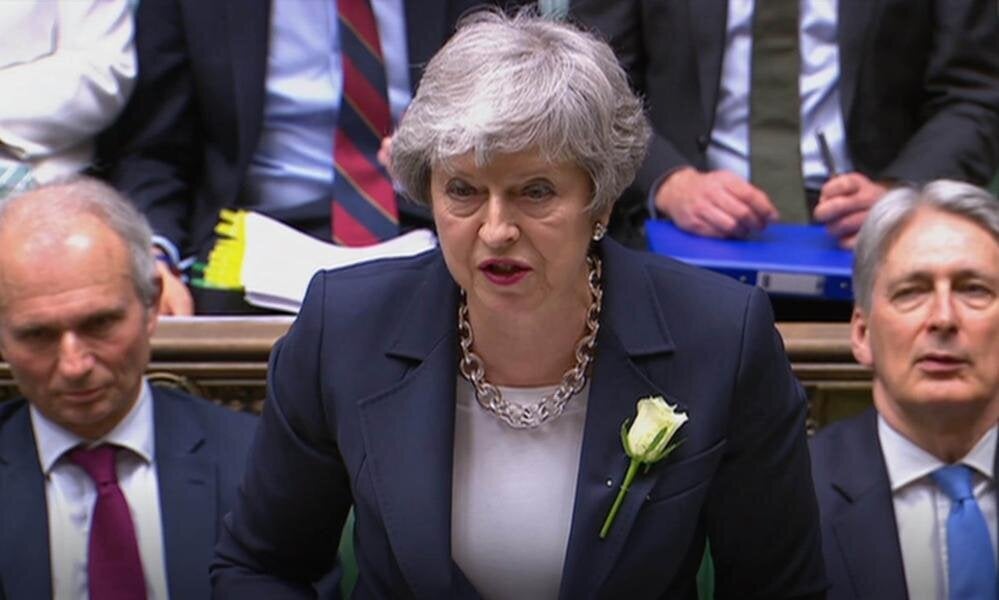The European elections were not supposed to happen. But they are. The UK was supposed to have left the EU already. But it has not. And despite it all, Theresa May is still prime minister. This is why. And what happens next.
Why are the elections even happening?
Because the UK is still in the EU and member states have a legal obligation to take part.
Theresa May had planned for the UK to have left the EU on March 29, 2019. But parliament has repeatedly rejected the deal she agreed with Brussels.
In order to avoid a no-deal Brexit, the PM secured extensions to the Article 50 process. The new exit day is set for October 31.
When are the elections?
Elections to the European Parliament will take place in the UK on Thursday May 23.
The UK elects 73 MEPs to the 751 seat legislature. For the elections, the UK is divided into 12 regions with each region electing a different number of MEPs depending on its population.
When do we get the results?
The results will not be announced until 10pm on Sunday May 26. This is because the elections take place on different days in different EU countries.
If the results of the UK vote were announced while other countries were still voting, it could influence the outcome.
What do the polls say?
A YouGov poll for The Times on Monday put The Brexit Party in the lead on 34%. The survey placed Labour second on 16%, the Lib Dems on 15%, the Greens on 11% and the Tories on just 10%. Change UK was on 5%.
An Opinium poll for The Observer on Sunday showed Nigel Farage’s Brexit Party in the lead on 34%. Labour was in second on 21% and the Lib Dems were third on 12%. The expected Tory meltdown looks almost inevitable, with the party collapsing to just 11%.

A separate bombshell ComRes survey also made everyone in Westminster stand up and take notice. It showed the Brexit Party had also overtaken the Tories in a general election.
The poll put Labour in the lead on 27%, the Brexit Party in second on 20% and the Tories in third on 19%.
If repeated at an actual election it would see Farage’s party gain 49 seats, becoming the UK’s second biggest party behind Labour.
What will the results mean?
If the Brexit Party does get the biggest share of the vote, Farage can be expected to claim it means the British public want the no-deal exit advocated by his party.
This is why Tony Blair, who wants a second referendum, has said it is “important the anti-Brexit side is larger and stronger than the Farage side”.
Theresa May will likely argue a victory for the Brexit Party is a “protest vote” against the deadlock in Westminster. She will urge her MPs to pass a deal sooner rather than later - or risk a wipeout at the general election.
But hardline eurosceptic Tories will probably take it as a sign any softer Brexit deal struck with Labour would be an electoral mistake.
On the other hand, Jeremy Corbyn can be expected to claim a strong second place showing for his party means voters want Brexit to be delivered, but on Labour’s terms.
But pro-Remain Labour MPs who back a second referendum will likely argue it demonstrates the popularity of putting any deal to a public vote.
The Lib Dems and Change UK meanwhile are in a battle to become the go-to “stop Brexit” party.
Remember: Farage won the last European elections in 2014. Ukip got 27% of the vote at that poll and secured 24 MEPs. The result arguably shocked David Cameron into feeling he had to hold the 2016 referendum.
Will a Brexit deal be done?
Talks between Labour and the Conservatives were due to resume on Monday. And it has been suggested if a deal is reached, Theresa May could ask MPs to vote on her Withdrawal Agreement Bill (WAB) as soon as this week.
The European elections can not be avoided. But the government hopes pushing a Brexit deal through parliament could mean the new British MEPs never actually take up their seats on July 2.
We have been here before however. Shadow Health Secretary Jon Ashworth said on Sunday the cross-party negotiations were “not getting very far”.
How long will Theresa May remain prime minister?
Against all odds, the prime minister is still the prime minister. But Theresa May is due for a showdown with the executive of the powerful 1922 backbench committee of Tory MPs this week.
Sir Graham Brady, the chairman of the 1922, has said he expects May to give a “clear understanding” of her timetable for departure. But she has shown little sign of quitting before she is pushed.

May promised to resign once MPs pass her Withdrawal Agreement. They have not. And the failed coup against her last year means the party currently has no formal way to force her from office until December.
Parliament will also be in recess immediately following the European election results, meaning MPs will be in their constituencies rather than in Westminster. Which, in theory, makes it harder to plot.
Who will replace her?
How long is a piece of string? It is probably more helpful to list which Tory MPs do not fancy a shot at the leadership.
Former Work and Pensions Secretary Esther McVey and current International Development Secretary Rory Stewart have both already declared they will run. Andrea Leadsom, the leader of the Commons, has said she is “seriously considering” it.
Others expected to throw their hat into the ring include: Ex-Foreign Secretary Boris Johnson, current Foreign Secretary Jeremy Hunt, ex-Brexit Secretary Dominic Raab, Home Secretary Sajid Javid, Defence Secretary Penny Mordaunt and Chief Secretary to the Treasury Liz Truss.
